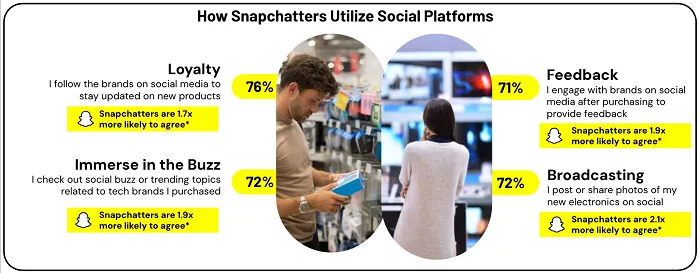GA4 Setup: Get Started in 9 Essential Steps
Google Analytics 4 (GA4) officially replaced Universal Analytics in July 2023, and it wasn’t a smooth transition. Unless you switched to the new Google Analytics, your analytics simply stopped processing […]

Google Analytics 4 (GA4) officially replaced Universal Analytics in July 2023, and it wasn’t a smooth transition. Unless you switched to the new Google Analytics, your analytics simply stopped processing data.
If you’re still uncertain about the transition or would like some best practices to get your analytics up and running, we’ve got you covered.
1. Understanding GA4’s Analytics Evolution
Google has changed a lot of the definitions that go into its calculations, which means you as a user will encounter many discrepancies to what you used to see in your dashboards.
At the ground level, you can no longer adjust a set of rules to fine-tune the lens through which you look at a particular set of data. Instead, you get three types of streams — web, iOS app and Android app — without any filtering options. Those have now moved to the Explore reports. The advantage of this change is that SEOs can now more easily track user sessions across devices.
You’ll also notice that some metrics may sound familiar but deliver different results. For instance, UA used to highlight Total Users in most reports, whereas GA4 primarily tracks Active Users. While that doesn’t have to cause varying values, it can result in pageview discrepancies of up to 10% and double that for user and session data.
2. Creating Your GA4 Property
If you haven’t used UA before and want to set up an entirely new GA4 property, the process is pretty straightforward. In the admin panel, you simply click on the giant plus button in the top left and choose Create Property.
You then need to input your basic data, like time zone and currency, and configure your web data stream. Just like under UA, you’ll add your industry and main strategic goals.
What has changed, though, is that GA4 already comes with a couple of optimized reports right out of the box. During the setup process, you can toggle off individual ones you may not need, like file downloads or engagements with forms, to tailor the setup to your liking.
On the next screen, you’ll receive your measurement ID, which you’ll use to complete the setup in your backend.
3. Upgrading From Universal Analytics to GA4
If you’ve used UA in the past, you’ll need to create an entirely new property for GA4. The old one will remain in your dashboard but stop gathering data (unless you choose to delete it, of course).
Most likely, you’ll see a giant banner across your Google account, notifying you of the mandatory upgrade to GA4. You can either click on that banner or go through the admin settings.
Under Property, you can find the GA4 Setup Assistant, which guides you through the migration process, either by creating a blank GA4 property or by carrying over your adjustments. To actually gather data from your website, you’ll either need to enter details about your existing Google Tag or add a new one in your website’s backend.
Once that’s done, Google will present you with another setup assistant with all the necessary steps to complete your migration. This is where Google gives you a bit of control over which data you’d like to migrate.
4. Implementing GA4 Data Tracking on Your Website
We already mentioned that GA4 needs some code to communicate with your website’s backend. That can work with or without Google Tag Manager (GTM).
GTM provides you with a couple of predefined events, some of which are collected automatically, like page views or scroll events. And arguably, even the events set up through GTM give you more granularity. For example, you could easily A/B-test the variants on a CTA button or track various HTML elements.
At the most basic level, you can link GTM to GA4 by pasting your measurement ID into GTM after creating a new GA4 Configuration. As a trigger, you can choose “All Pages” to gather data on all your traffic.
In some scenarios, you may choose to go around GTM, like if you quickly want to set up a basic GA4 event. To do that, you’ll need to use a custom event, which you’ll find inside your property’s data settings.
Within each event, you can define the parameters, operators and values attached to it. Make sure to thoroughly test every new tag within the preview console before using it on your live website to avoid any bugs.
Subscribe to
The Content Marketer
Get weekly insights, advice and opinions about all things digital marketing.
Thanks for subscribing! Keep an eye out for a Welcome email from us shortly. If you don’t see it come through, check your spam folder and mark the email as “not spam.”
5. Validating Your Setup With DebugView
For troubleshooting and regular maintenance, you now get a new view of the logs about your individual tags, including timelines and device information. Remember, this only shows you sessions that have DebugView enabled, meaning you either need the Chrome extension for Google Analytics Debugger or enter preview mode through GTM.
You can find DebugView within your GA4 settings. It shows you a timeline of the events the GA4 tag sent through during the last 30 minutes and a quick overview of event types so you can inspect your current setup before going live with a new tag.
6. Enhancing Campaign Tracking by Linking GA4 With Google Ads
If you’re already using PPC, you’ll want to link Google Ads to GA4 so you can see your individual ad campaigns within reports and enhance your remarketing strategies over time, based on attribution reports. This isn’t yet another vanity metric, as doing so will allow you to assess your Google ad spend and target or exclude GA4 audiences from future campaigns.
To do this, you need to be a Google Ads administrator and have at least an Editor role within GA4. If you’re planning to adjust your bids based on conversion data, you also need to additionally link the GA4 account from within your Google Ads account. This is just a matter of clicking one button, though, so no need to panic. Once that’s done, you can import your conversions into GA4 and add audiences to any campaign or ad group.
7. Integrating GA4 With Google Search Console
To expand their analytics beyond what GA4 has to offer, most SEOs decide to integrate it with Google Search Console (GSC). After all, it’s free and can provide valuable insights into your site’s ranking or the types of queries that led to a click.
Just as you did with Google Ads, you can add the integration with GSC from within the admin console. Make sure you’re already verified as an owner in GSC. Within the GA4 dialogue, you simply click on “Choose accounts,” and pick the property you’d like to add. Other than in UA, you can now add both domain-type and URL-prefix properties.
All that’s left is adding the data stream that you’d like to link to your GSC data. Once that’s done, your Acquisition overview report will show two new cards, one for Google organic search traffic and another for organic search queries.
8. Streamlining Data Accuracy and Management
Remember how we said we no longer use different views but data streams? Well, one scenario where many UA users employed those views was to filter out internal traffic. That functionality has now been moved to the data stream’s settings.
Within your web data stream, there’s an option to configure your tag settings, which contains the menu to define internal traffic. There, you can quickly define parameters like IP address ranges to identify maintenance visits to your site.
After that, you can define a data filter inside your admin settings that refers back to the value parameter you defined.
Another important step in most website setups is a filter for unwanted referral traffic. You’ll define that under your web stream’s tag settings, but you’ll need to show all to see the option for “List unwanted referrals.”
9. Exploiting Advanced Event Tracking for Deeper Insights
As we mentioned earlier, GA4 comes with a set of automatic conversion tracking options guided by best practices. That will already help you gain insights into the most essential types of user engagements.
For more advanced setups, you’ll want to dig into attribution settings. They allow you to include anything from rules to entire algorithms in the conversion count.
Equally, Google doesn’t stop at automatically tracking conversions but gives you a whole list of recommended events. Those will cover everything from content shares to refunds before you’ll need to set up custom events, so it’s always worth checking if the type of conversion you want to track isn’t already on the list.
Clearly, GA4 takes some getting used to, but once you’ve understood the new logic of tracking events and grasped that most of your trusted features have only moved to a different menu, you’ll realize the potential the new platform holds for digital marketing. Now, dig in and get tracking!

 Tekef
Tekef 











_1.png)
_1.jpg)


















![8 steps to build your account-based marketing strategy [+ recommended tools]](https://www.hubspot.com/hubfs/account-based-marketing.webp)